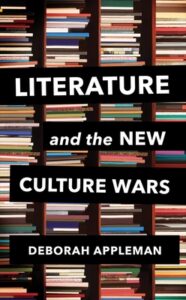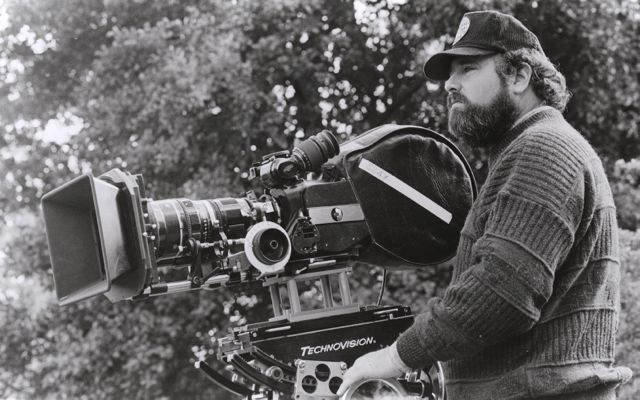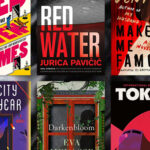
Teaching Literature in the New Culture Wars: Some Alternative Approaches
Deborah Appleman on How Educators Can Teach Troubling but Worthwhile Texts
Literature teachers don’t want to engage in harm by offering, in an untroubled or uncritical fashion, attitudes and racist and sexist tropes that harm students and complicitly acquiesce or worse, support those attitudes. Certainly there may be some material that is so objectionable it has no place in the high school curriculum. This could be because of its depictions of violence, gratuitous use of sex, excessive vulgar language, or hateful attitudes toward particular groups. (I purposely refrain here from citing specific texts, since unacceptability is so dependent on context including student characteristics and community standards.)
Literary study can help our students learn to read and resist ideology—a central purpose that in the 21st century has never been more important. Literature provides a site of inquiry like no other for exploring the human condition. As part of that exploration, we can help students learn to read both texts and worlds with a nuanced and critical eye.
We can teach them to discover how power and privilege are inscribed all around us so they can become the enlightened witnesses that bell hooks (1994) called for and that we so desperately need in these particularly troubled times. Perhaps this means that we interrogate the abuse of power and privilege of now-shunned authors. Doing so may mean we need to raise the question by engaging in the work, rather than removing it from the curriculum.
Literary study can help our students learn to read and resist ideology—a central purpose that in the 21st century has never been more important.
What follows are some suggestions to offer teachers of literature at both the high school and the college level a more nuanced approach to this current, powerful reappraisal of how and what we teach.
*
Teaching the controversy or teaching the conflict
The first and perhaps most direct approach is to teach the controversy, as Gerald Graff famously discussed. In Beyond the Culture Wars: How Teaching the Conflicts Can Revitalize American Education (1993), Graff presciently discusses the culture wars and their divisive influence on literary study. He argues that rather than avoid particular points of contention, “intellectual conflict should be made part of the universities’ object of study and thereby more successfully engaging students in the world of ideas and learning”:
I have been proposing a solution to these conflicts that I think is both practical and democratic: teach them. My argument is that the most educationally effective way to deal with present conflicts over education and culture is to teach the conflicts themselves.
To be sure, the kinds of conflicts Graff was addressing nearly three decades ago were different in some significant ways from the current issues of triggers and cancel culture. His focus was primarily on the university culture and curriculum. Still, his primary point about facing the conflicts and incorporating them into the curriculum, rather than ignoring them, seems particularly relevant for this new iteration of the culture wars.
Graff’s exhortation to teach the conflicts, while originally designed for the university classroom and curriculum, can be profitably integrated into secondary literature and humanities classrooms. Specifically, secondary students could be presented with the conflict, whether it is about unsettling revelations about the character of the author, revised sensibilities about language, or hard fought and critical realizations about the ways in which certain people are portrayed. The values and social norms that are presented or represented in the text can also be discussed and interrogated.
The strength of this approach is that it offers two sides to an issue about a text, rather than deciding a priori where the argument would land. Skeptics of this strategy might rightly argue that there are not, or should not be, two sides to certain issues—no opposing view, for example, in the condemnation of racism, misogyny, and homophobia. Yet in this context, the conflict is not about the attitudes that are animated, often offensively in the texts themselves; the conflict is about the value of learning from points of view that are different from our own, considering the evolution of social thought and positions and considering the ways in which a piece of literature reflects not necessarily the times in which it is read but rather the times in which it is written. As Heidi Stevens (2021) writes, “It’s a welcome evolution—a necessary one, even—to revisit the things and the people and the virtues held dear by tastemakers whose tastes weren’t shared, or informed by, the people they harmed.”
The most educationally effective way to deal with present conflicts over education and culture is to teach the conflicts themselves.
Graff’s approach (1993) offers a middle ground between the past practice of presenting the classics almost reverently and the current practice of removing them from the curriculum entirely. For example, he writes: “Had I been exposed to a little ‘disrespect’ for the classics, I might have found studying them more rewarding than I did.” What might this strategy look like in the high school literature classroom?
There are many materials discussing the controversy surrounding Adventures of Huckleberry Finn that students could read and discuss, including the film Born to Trouble (2000), which chronicles the controversy that occurred in an Arizona high school when the novel was taught. Offering students the opportunity to read the novel and discuss its appropriateness for their literary education can sharpen students’ critical thinking skills, and help them develop aesthetic sensibilities by discussing the relative literary value of the work. In addition, teachers can invite students to consider the complex issues of race, discuss the implications of using the n-word, and discuss what kinds of texts should be studied in school and why. In other words, why not let students discuss the controversy themselves, rather than not teach the book at all?
*
Critical Lenses
Literary theory can be used to trouble troubled texts by introducing students to critical lenses that accompany their reading of a literary text (Appleman, 2015). Critical lenses provide an interpretive frame to consider the ideologies that drive the text and to question and—when necessary—resist them. They provide students with multiple perspectives on a text, something that neither untroubled traditional presentation nor one-sided attacks on the texts can provide. I think of lenses as a kind of ideological corrective, a way of laying bare the assumptions that undergird the text, the author, the world that is represented in the text, and the world in which the text was produced. Rather than ban texts completely because of their problematic assumptions, why not read critically so that the students might interrogate those assumptions and have an opportunity for critical analysis?
Ironically, my first foray into teaching critical lenses was created by a challenge I faced in teaching Lolita to a high school student who had chosen that novel as an independent reading (Appleman, 1993). Even though I hadn’t sponsored or promoted or assigned the reading, I felt uncomfortable having her read the novel in an uncritical way. We read feminist theory as we read the novel, which offered the student an opportunity to not only read the text but also to question it on her own with her reading of the text.
Similar to the current tendency to eliminate or cancel certain reading material, my initial instinct was to not have her read the book. Instead, I trusted her to read it but also gave her the supplementary materials that would enable her to critique it. The opportunity to both read and simultaneously critique the text using the lens of contemporary feminist theory proved to be a positive and fruitful approach for the student, one that I later amplified in Critical Encounters in Secondary English: Teaching Literary Theory to Adolescents (2015). In that work, I have explicated the ways in which a variety of theoretical frames or lenses can be used to explore texts—reader response, formalist, postcolonial, class or Marxist, and gender or feminist.
Critical thinking and open-mindedness will not be encouraged by replacing one monolithic perspective with another, leaving little room for nuance or variety in student interpretation.
Perhaps a multiple theoretical approach, especially if critical race theory is used, can be seen as being related to the #DisruptTexts movement. Yet there are some very important differences between these approaches, differences that perhaps get to the heart of the matter with the culture wars. Critical thinking and open-mindedness will not be encouraged by replacing one monolithic perspective with another, leaving little room for nuance or variety in student interpretation. The primary objective of using critical lenses is to offer multiple theoretical perspectives, in part to offset the charge—a central claim against critical race theory—that students are being indoctrinated or brainwashed.
*
Unmooring Anchor Texts
Part of the issue with canonical texts that have been challenged has been the lack of student choice; in addition to the texts being offensive, they were required reading. Perhaps part of the solution is simply not to require them, but still make them available as a choice. Student choice is another possible approach to teaching or not teaching troubled or troubling texts. One of the challenges that teachers especially at the secondary level have is to assign one text to all students, regardless of their experiences, identity, or positionality.
One of the first challenges that some secondary teachers have faced with regard to this has been with the teaching of the staple To Kill a Mockingbird. Different students and their parents respond in various ways to the teaching of a text with the presence of the n-word, a familiar scenario with Adventures of Huckleberry Finn as well. Part of the issue, of course, is when the curriculum requires that every student read the book. What if there are other texts the students could choose? Of course, that doesn’t ameliorate the problematic and troubling aspects of the text itself, but it does offer opportunities to honor student choice without completely removing the text from the curriculum.
*
Pairing Texts
To expand this notion of decentering troublesome anchor texts, in addition to not requiring that all students read the same text, what if the offending or troubled texts were paired with texts that completely called the other text into question, by virtue of its perspective, author, or point of view?
Pairing texts allows for a rich intertextual dialogue. It becomes a kind of literary call and response. For example, one could pair Adventures of Huckleberry Finn with Incidents in the Life of a Slave Girl or The Absolutely True Diary of a Part-Time Indian. Or Catcher in the Rye with Prep, 1984, and Feed; Romeo and Juliet and The Fault in Our Stars or To Kill a Mockingbird with Just Mercy.
This last suggested pairing raises another idea, pairing novels with nonfiction, including nonfiction texts that offer some empirical perspectives on some of the assumptions or portrayals in the text that might be problematic. The objective behind a paired novel approach is that the novel doesn’t stand by itself uninterrupted and untroubled. The intertextual nature of the students’ reading experience helps raise important issues and calls attention to problems within the text.
Another version of decentering a troublesome novel, a version that has become increasingly popular, is the text set. This is an approach that works well with readers at any grade level. A text set usually includes shorter pieces, such as short stories, poems, and several nonfiction pieces. A text set can frame and contextualize a troubling text. Some of the pieces that could be included in the text set could be works that directly challenge or take on the text in question. Partly in response to the common core state standards adopted by most school systems, many ELA (English Language Arts) teachers sought ways to incorporate nonfiction into their curriculum. Texts sets can offer a way to do just that, and material that contradicts, enlightens, or expands the text can be incorporated into literary study.
__________________________________

Excerpted from Literature and the New Culture Wars: Triggers, Cancel Culture, and the Teacher’s Dilemma by Deborah Appleman. Copyright © 2022. Available from W.W. Norton & Company.
Deborah Appleman
Deborah Appleman is the Hollis L. Caswell professor and chair of Educational Studies at Carleton College.



















